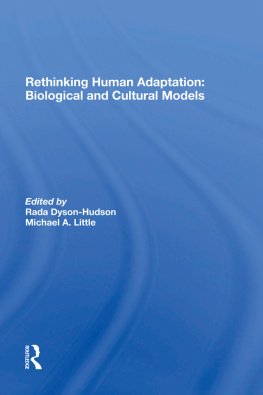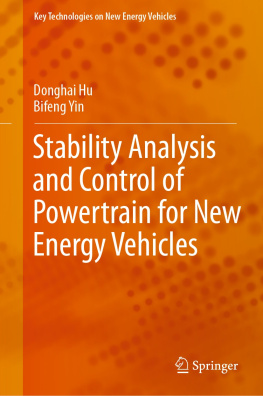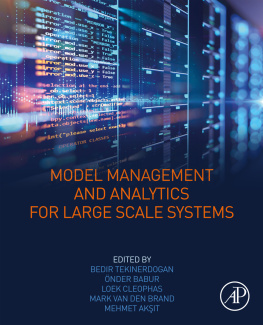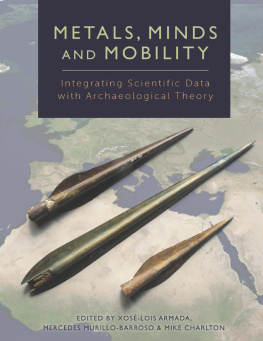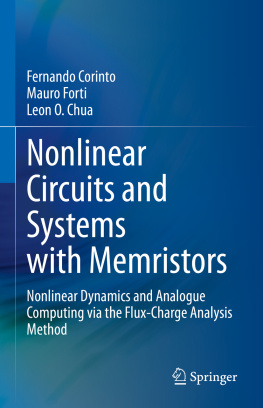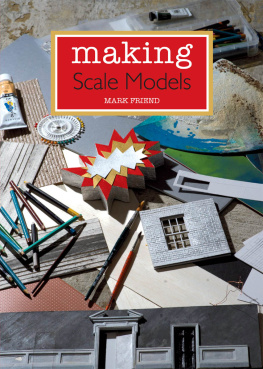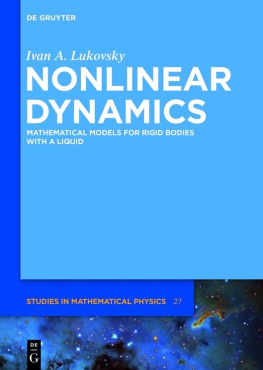First published 2005 by Ashgate Publishing
Published 2016 by Routledge
2 Park Square, Milton Park, Abingdon, Oxon OX14 4RN
711 Third Avenue, New York, NY 10017, USA
Routledge is an imprint of the Taylor & Francis Group, an informa business
Copyright 2005 Christopher S. Beekman and William W. Baden
Christopher S. Beekman and William W. Baden have asserted their right under the Copyright, Designs and Patents Act, 1988, to be identified as the editors of this work.
All rights reserved. No part of this book may be reprinted or reproduced or utilised in any form or by any electronic, mechanical, or other means, now known or hereafter invented, including photocopying and recording, or in any information storage or retrieval system, without permission in writing from the publishers.
Notice:
Product or corporate names may be trademarks or registered trademarks, and are used only for identification and explanation without intent to infringe.
British Library Cataloguing in Publication Data
Nonlinear models for archaeology and anthropology:
continuing the revolution
1. Social archaeology 2. Nonlinear systems
I. Beekman, Christopher Stockard II. Baden, William W.
930.101
Library of Congress Cataloging-in-Publication Data
Nonlinear models for archaeology and anthropology: continuing the revolution / edited
by Christopher S. Beekman and William W. Baden,
p. cm.
Includes bibliographical references and index.
ISBN 0-7546-4319-0
1. Archaeology--Mathematical models. 2. Nonlinear systems. I. Beekman, Christopher Stockard. II. Baden, William W.
CC80.6N66 2005
930.10151--dc22
2005024902
2005024902
ISBN 9780754643197 (hbk)
Robert L. Axtell, Center on Social and Economic Dynamics, The Brookings Institution, raxtell@brookings.edu
I am co-author with Joshua Epstein of Growing Artificial Societies: Social Science from the Bottom Up (MIT Press, 1996) and creator of the Sugarscape software on which the book is based. I have been affiliated with the Santa Fe Institute since a graduate student and am currently an External Faculty Member. Together with Brookings colleagues and archaeologists George Gumerman and Jeff Dean, I have worked on an agent based model of the Anasazi in the Long House Valley area of Black Mesa, work published in the Proceedings of the National Academy of Sciences and reviewed in Nature. I am co-founder of the Center on Social and Economic Dynamics at Brookings, a research center dedicated to development of agent based modelling techniques in the social sciences. Most recently I have been applying agent techniques to problems in economics, including the self-organization of markets and the emergence of firms, and recently finished working on a book entitled Artificial Economies of Adaptive Agents: The Multi-Agent Systems Approach to Economics.
William W. Baden, Institutional Research and Analysis, Indiana University Purdue University Fort Wayne, baden@ipfw.edu
Starting academic life as a physics student with its strong computational emphasis ensured my trajectory once I converted to Anthropology. While a graduate student in the Pre-Google era I literally stumbled upon Nicolis and Prigogines 1977 self-organization volume on a library shelf. A visiting lecture by Richard N. Adams further inspired me to incorporate these concepts in my dissertation research. The topic was derived from discussions between fellow graduate students about the practical aspects of growing maize. We had all grown up on farms and agreed that agriculture was not inherently self-sustaining. Proving that to the city folk would become the research challenge. Years later this work was resurrected when I crossed paths with Chris Beekman. Our shared interest in the unachieved potential of the Complexity Sciences led us to organize this text. As for the maize, I continue to dedicate my research to all of us that know how to hoe a row.
Christopher S. Beekman, Department of Anthropology, University of Colorado at Denver and Health Sciences Center, christopher.beekman@cudenver.edu
After a graduate education (Ph.D. Vanderbilt University 1996) focused heavily on political economic and humanistic approaches in ancient Mesoamerica, William Baden sparked my interest in complexity while we were both visiting faculty at Indiana University Purdue University Fort Wayne. I have since made a point of orienting my field projects in Jalisco, Mexico, towards addressing current issues of agency and political behaviour as well as laying the groundwork for a planned computer simulation in the region that more explicitly combines ecological and social factors.
Carole L. Crumley, Department of Anthropology, University of North Carolina, crumley@unc.edu
I have long had an interest in both science and the humanities, with consecutive undergraduate majors in classics, geology, and anthropology (B.A. University of Michigan, Ann Arbor 1966). Doctoral work in North American archaeology (M.A. University of Calgary 1967) and in paleoclimatology, ecology, and Iron Age (Celtic) archaeology (Ph.D. University of Wisconsin, Madison 1972) turned me toward the long-term study of a region in Burgundy, France. I soon found that the current theoretical paradigm in archaeology does not serve the range of forms that power can take in human societies, and first published on the idea of heterarchy in 1979. Heterarchys origins in brain research and artificial intelligence, coupled with my interest in Earth systems, led me to contemporary complex systems research. I teach state formation, historical ecology, and ethnohistory at the University of North Carolina, Chapel Hill.
Robert J. Hommon, Pacific Area Archaeologist, National Park Service, rob_hommon@nps.gov
I am Senior Cultural Resource Scientist and Archaeologist for the Pacific West Region, Honolulu Office, National Park Service. My interest in the application of complexity theory to human culture began to emerge when reading James Gleicks popular book, Chaos, while preparing a paper on Hawaiian archaeology in 1992. I am currently working on a book that will expand on ideas presented in my contribution to this collection.
J. Stephen Lansing, Department of Anthropology, University of Arizona, Slansing7@aol.com
I am professor of anthropology at the University of Arizona with an adjunct appointment in ecology and evolutionary biology, and a research professor at the Santa Fe Institute. I became interested in complexity theory when I gave a talk at the Santa Fe Institute about Balinese water temples, and was asked whether water temple networks could self-organize.


